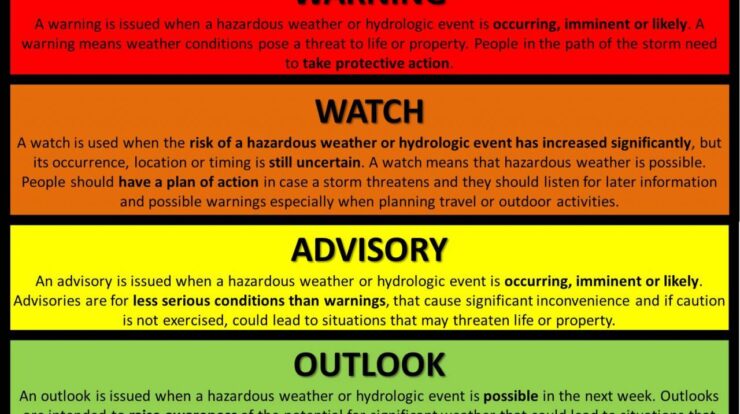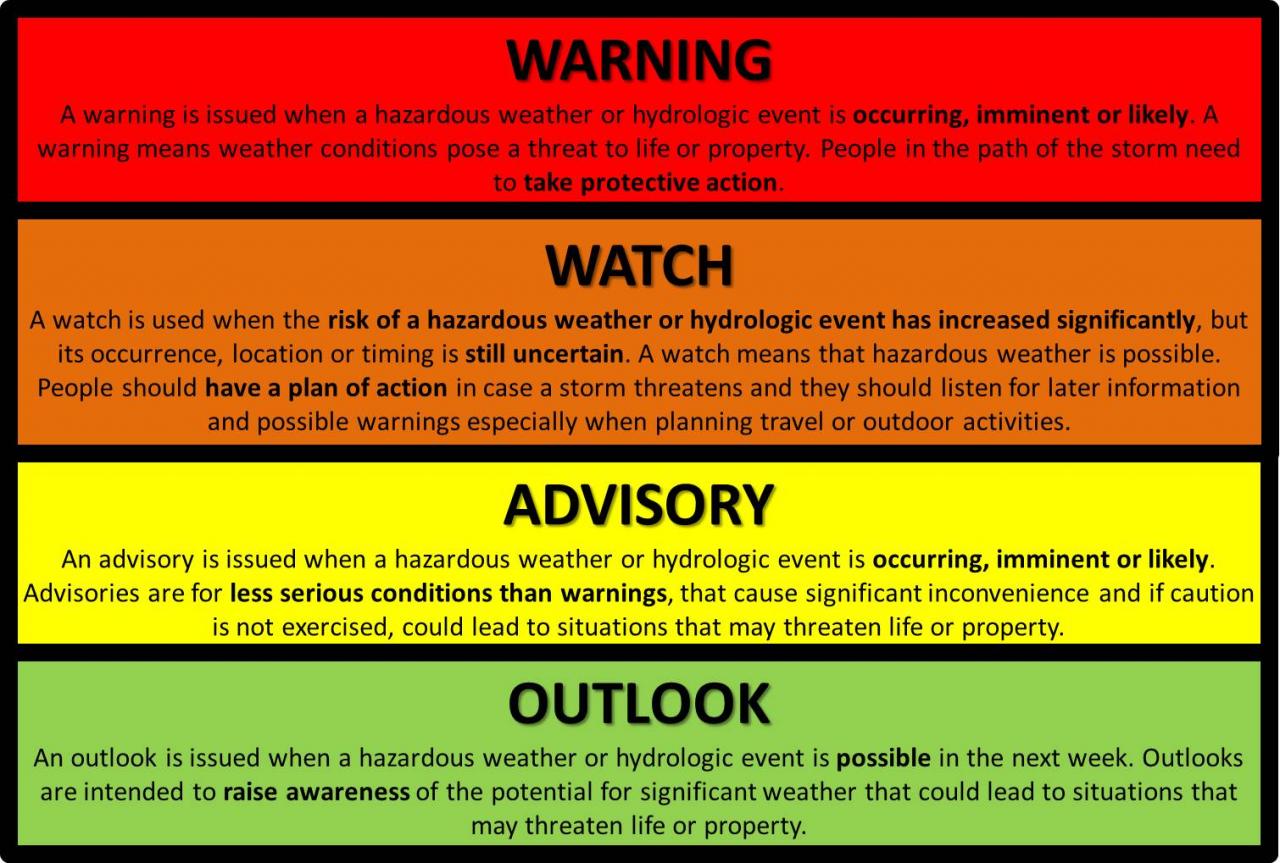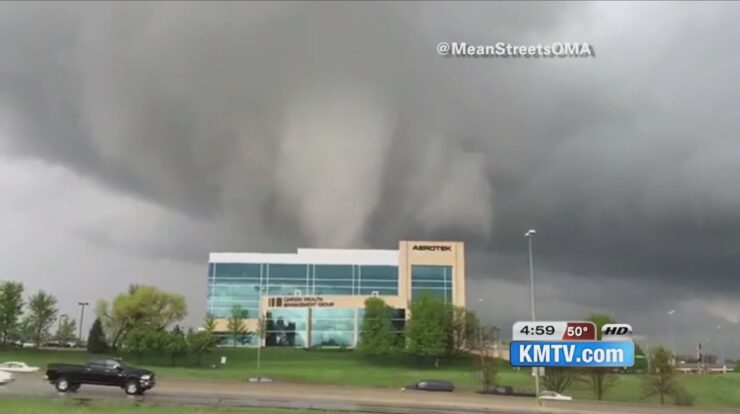
Difference between watch and warning – In the realm of weather forecasting, the distinction between a watch and a warning can be crucial for ensuring safety. While both terms indicate the potential for hazardous weather, they convey different levels of urgency and recommended actions. This article delves into the nuances of these alerts, exploring their definitions, severity levels, issuing authorities, response actions, dissemination channels, and historical impacts.
Definitions
When it comes to weather forecasting, two terms that are often used are “watch” and “warning”. These terms have distinct meanings and convey different levels of urgency. Let’s break down their definitions:
Watch:A watch is issued when weather conditions are favorable for a specific hazardous weather event to develop or occur. It indicates that conditions are ripe for the event to happen, but it does not mean that the event is imminent.
Warning:A warning is issued when a hazardous weather event is occurring or is expected to occur very soon. It signifies that the event is imminent or already underway and that immediate action should be taken to stay safe.
To illustrate, if a watch is issued for a thunderstorm, it means that conditions are favorable for a thunderstorm to develop. However, it does not mean that a thunderstorm is guaranteed to occur. On the other hand, if a warning is issued for a thunderstorm, it means that a thunderstorm is already happening or is about to happen, and you should seek shelter immediately.
Severity Levels
Watches and warnings are issued based on the severity of the potential or ongoing weather event. Watches are typically issued for less severe events, while warnings are reserved for more severe events.
The criteria used to determine the severity level include the type of event, its intensity, and the likelihood of it occurring. For instance, a watch might be issued for a heavy rainfall event if there is a chance of significant rainfall, but it is not expected to cause major flooding.
A warning, on the other hand, would be issued if the rainfall is expected to be so intense that it could lead to flooding or other dangerous conditions.
Issuing Authorities

Watches and warnings are issued by authorized meteorological agencies, such as the National Weather Service (NWS) in the United States and the Meteorological Service of Canada (MSC) in Canada.
These agencies monitor weather conditions and issue watches and warnings based on their analysis of weather data and forecasts. They use a variety of tools and technologies, including weather stations, radar, and satellite imagery, to gather information about current and upcoming weather patterns.
Response Actions
When a watch or warning is issued, it is important to take appropriate actions to stay safe.
For a watch:Monitor the weather forecast and be prepared to take action if the event develops. Gather necessary supplies, such as food, water, and a first-aid kit. Stay informed about the situation and follow the instructions of local authorities.
For a warning:Take immediate action to protect yourself from the hazardous weather event. Seek shelter in a sturdy building or follow the evacuation orders issued by authorities. Avoid driving or walking through flooded areas.
Dissemination Channels
Watches and warnings are disseminated through a variety of channels to ensure that the public is aware of potential or ongoing hazardous weather events.
These channels include:
- Weather apps:Many weather apps provide real-time updates on watches and warnings, allowing you to stay informed even when you are on the go.
- Television and radio:Local television and radio stations broadcast weather forecasts and issue watches and warnings as needed.
- NOAA Weather Radio:NOAA Weather Radio is a network of transmitters that broadcast weather forecasts and warnings directly to homes and businesses.
- Social media:Many meteorological agencies and emergency management organizations use social media to share watches and warnings with the public.
Historical Impacts
Watches and warnings have played a crucial role in saving lives and property during significant weather events throughout history.
For example, in 2012, the National Weather Service issued a tornado warning for the city of Joplin, Missouri. This warning gave residents time to seek shelter, which likely saved many lives as the tornado devastated the city.
Another example is Hurricane Katrina in 2005. The National Hurricane Center issued a hurricane warning for the Gulf Coast, which gave residents time to evacuate and prepare for the storm. While the hurricane caused significant damage and loss of life, the warnings likely saved many lives.
Catch all the action of your favorite team with a lakers game watch . But if the weather turns sour, make sure you know the difference between a watch and a warning ( is a watch or warning worse ). Stay informed on the latest news by learning how to watch ion . And for those who want to delve into the fascinating world of nuclear science, check out how to watch oppenheimer .
Ultimate Conclusion
Understanding the difference between a watch and a warning is essential for staying informed and taking appropriate precautions during inclement weather. By recognizing the severity levels, response actions, and dissemination channels associated with each type of alert, individuals can enhance their safety and mitigate the potential risks posed by severe weather events.
Detailed FAQs: Difference Between Watch And Warning
What is the primary difference between a watch and a warning?
A watch indicates the possibility of hazardous weather within a specific area, while a warning signifies that the hazardous weather is imminent or already occurring.
Who is responsible for issuing watches and warnings?
In the United States, the National Weather Service (NWS) is the primary agency responsible for issuing watches and warnings.
What actions should be taken when a watch is issued?
When a watch is issued, individuals should monitor weather updates and be prepared to take action if conditions worsen.
Catch the Lakers game watch with friends and fellow fans. If severe weather is approaching, it’s crucial to understand the difference between a watch and a warning ( is a watch or warning worse ). Stay informed by tuning into how to watch Ion for the latest updates.
In other news, discover is a watch or warning worse to ensure your safety. Finally, don’t miss the highly anticipated how to watch Oppenheimer when it hits theaters.
What actions should be taken when a warning is issued?
When a warning is issued, individuals should take immediate action to seek shelter or evacuate if necessary.
